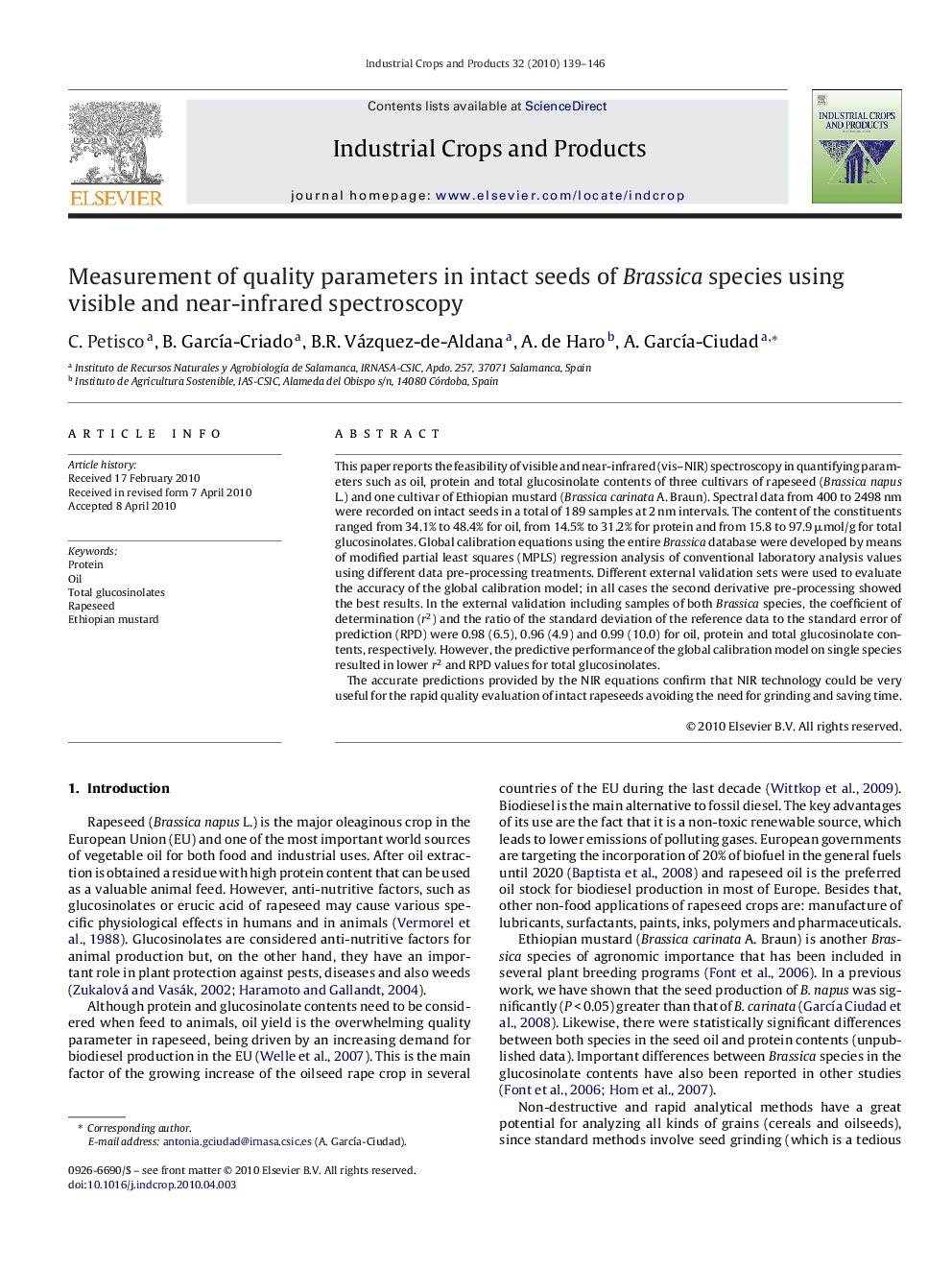| Article ID | Journal | Published Year | Pages | File Type |
|---|---|---|---|---|
| 4514471 | Industrial Crops and Products | 2010 | 8 Pages |
This paper reports the feasibility of visible and near-infrared (vis–NIR) spectroscopy in quantifying parameters such as oil, protein and total glucosinolate contents of three cultivars of rapeseed (Brassica napus L.) and one cultivar of Ethiopian mustard (Brassica carinata A. Braun). Spectral data from 400 to 2498 nm were recorded on intact seeds in a total of 189 samples at 2 nm intervals. The content of the constituents ranged from 34.1% to 48.4% for oil, from 14.5% to 31.2% for protein and from 15.8 to 97.9 μmol/g for total glucosinolates. Global calibration equations using the entire Brassica database were developed by means of modified partial least squares (MPLS) regression analysis of conventional laboratory analysis values using different data pre-processing treatments. Different external validation sets were used to evaluate the accuracy of the global calibration model; in all cases the second derivative pre-processing showed the best results. In the external validation including samples of both Brassica species, the coefficient of determination (r2) and the ratio of the standard deviation of the reference data to the standard error of prediction (RPD) were 0.98 (6.5), 0.96 (4.9) and 0.99 (10.0) for oil, protein and total glucosinolate contents, respectively. However, the predictive performance of the global calibration model on single species resulted in lower r2 and RPD values for total glucosinolates.The accurate predictions provided by the NIR equations confirm that NIR technology could be very useful for the rapid quality evaluation of intact rapeseeds avoiding the need for grinding and saving time.
